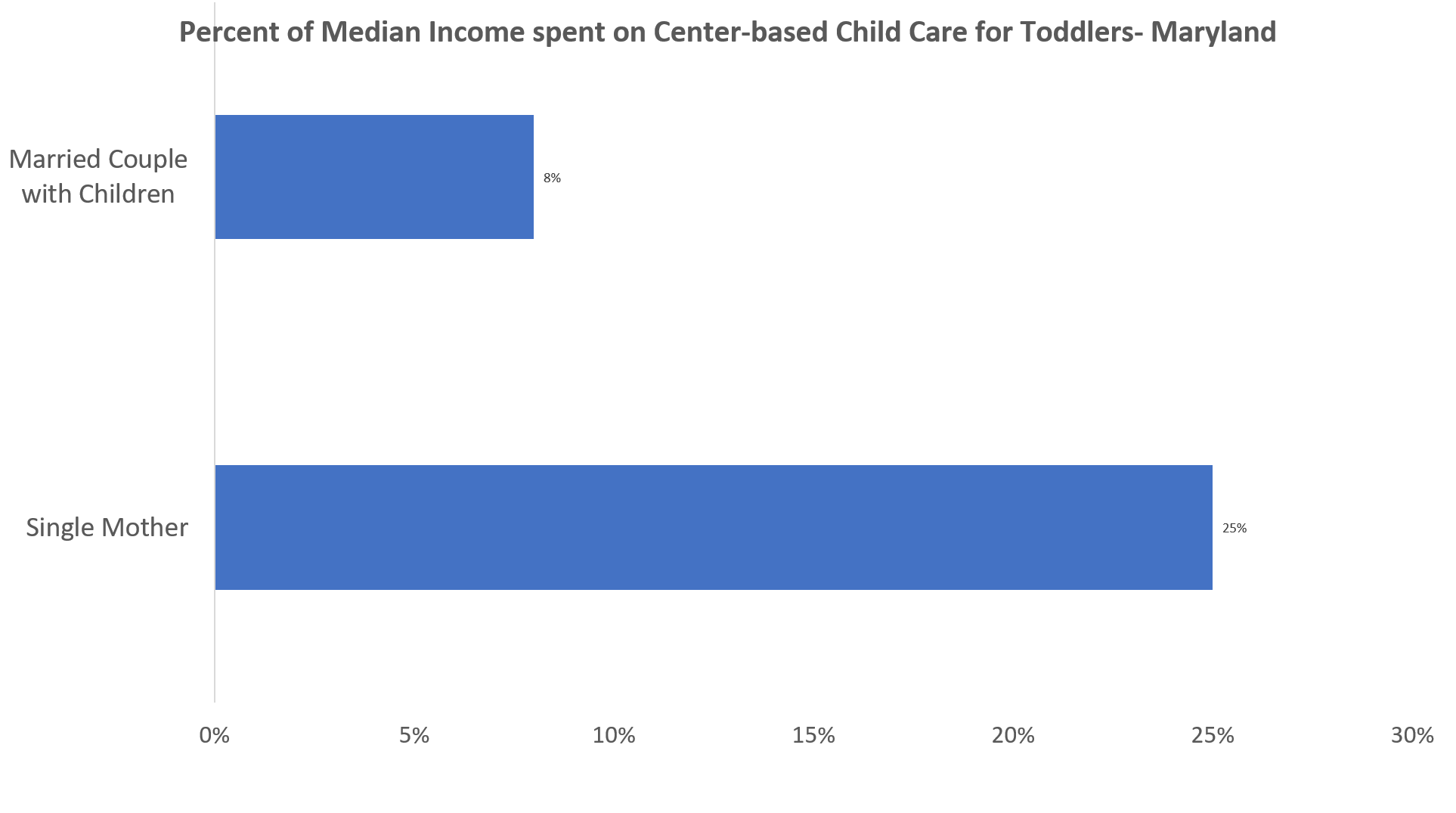Maryland Ranks 21st Nationally in Measures of Child Well-Being As Parents Face Growing Challenges With Child Care, Housing
Maryland families are facing a wide range of challenges, such as the high cost of essentials like child care and housing, and that is affecting the well-being of children across the state. Maryland ranks 21st in child well-being according to the 2023 KIDS COUNT® Data Book just released by The Annie E. Casey Foundation.
The Data Book, released annually, is a 50-state report of recent household data developed by the Annie E. Casey Foundation that analyzes how children and families are faring. Each year, the Data Book presents national and state data from 16 indicators in four domains —economic well-being, education, health, and family and community factors — and ranks the states according to how children are faring overall.
The data in this year’s report are mostly from 2021. New Hampshire, Utah and Massachusetts rank first, second and third in overall well-being in the 2023 Data Book; Mississippi, Louisiana and New Mexico ranked 48th, 49th and 50th. The report this year focuses on child care and highlights how lack of access to affordable and quality child care is impacting children and families in the United States
Cost of Child Care Creates Barriers to Work, Economic Security
The Data Book shows that, even prior to the pandemic, the child care system was already broken and characterized by high and rising costs, long waitlists and other access challenges for families, precarious operating conditions for providers, and low wages for workers. COVID-19 made things worse and, with key temporary federal supports for families having expired, this has lessened many families’ ability to afford care.
Too many parents cannot secure child care that is compatible with work schedules and commutes. Nearly 12% of Maryland children ages birth to 5 live in families in which someone quit, changed, or refused a job because of problems with child care in 2020-21. This is near the national average of nearly 13%. People of color are slightly more likely to experience these challenges, with 17% of Black families, 16% of Latino families, 14% of Asian and Pacific Islander families, 10% of white families, and 13% of multiracial families with children ages birth to 5 reporting job changes due to child care problems. In addition, women are five to eight times more likely than men to experience negative employment consequences related to caregiving.
Even if parents can find an opening at a child care provider near their home, they often can’t pay for it. Maryland’s average annual cost of center-based child care for a toddler in 2021 was $11,090, which is nearly 8% of the median income of a married couple and 25% of a single mother’s income in the state.
 While the cost of care burdens families, child care workers are paid worse than 98% of professions. Median national pay for child care workers was $28,520 per year or $13.71 an hour in 2022 (in Maryland $14.02), less than the wage for retail ($14.26) and customer service ($18.16) workers.
While the cost of care burdens families, child care workers are paid worse than 98% of professions. Median national pay for child care workers was $28,520 per year or $13.71 an hour in 2022 (in Maryland $14.02), less than the wage for retail ($14.26) and customer service ($18.16) workers.
All of these challenges put parents under tremendous stress to meet the dual responsibilities of providing for their families and ensuring their children are safe and nurtured. In addition, the shortcomings of the child care system disproportionately affect the financial well-being of women, single parents, parents in poverty, families of color and immigrant families.
Transitioning from a faltering child care system to creating a flourishing one will take new thinking and investing at the local, state, and national levels. An executive order issued by President Biden in April is aimed at expanding access, lowering costs, and raising wages. It could prove to be a helpful framework, but more is needed:
- Federal, state, and local governments should invest more in child care. State and local governments should continue to fund needed child care services and increase capacity so that everyone who needs child care can access it. Congress should reauthorize and strengthen the Child Care and Development Block Grant Act, and increase funding for public pre-kindergarten and Head Start.
- Public and private leaders should work together to improve the infrastructure for home-based child care, beginning by lowering the barriers to entry for potential providers by increasing access to start-up and expansion capital.
- To help young parents, Congress should expand the federal Child Care Access Means Parents in School (CCAMPIS) program, which serves student parents.
Economic Insecurity Continues to Harm Maryland Children
The KIDS COUNT Data Book also shows that Maryland policymakers must continue to prioritize measures that increase basic economic security for Maryland families. Children living in poverty or in a household facing financial difficulties are never immune from the stress of their environment, which affects their overall well-being. Despite Maryland’s relative wealth compared to other states, thousands of families are still unable to afford the basics.
The report finds that in Maryland in 2021:
- 187,000 or 14% of children lived in households with income below the poverty line. In 2021, a family of two adults and two children lived in poverty if the family’s annual income fell below $27,479. (rank: 18th)
- 344,000 or 25% of children lived with parents who lack secure employment. These are children under age 18 who live in families where no parent has regular, full-time, year-round employment. For children in single-parent families, this means the parent did not work at least 35 hours per week for at least 50 weeks in the 12 months prior to the survey. For children living in married-couple families, this means neither parent worked at least 35 hours per week for at least 50 weeks in the 12 months before the survey. Children who live with neither parent are included as not having secure parental employment because they are likely to be economically vulnerable (rank: 14th)
- 423,000 or 31% of children lived in households with high housing cost burdens, meaning that the households spent than 30% of their monthly pretax income on housing-related expenses, including rent, mortgage payments, taxes and insurance. (rank: 39th)
- 62,000 or 4% of children under the age of 19 did not have health insurance (rank: 15th) .
- Between 2017 and 2021, 43,000 or 3% of children lived in high-poverty areas. High poverty areas are census tracts where the poverty rates of the total population are 30% or more, in 2021 this would be a family of two adults and two children with an annual income below $27,479. (rank: 10th)
Maryland has made some recent progress, such as raising the state’s minimum wage to $15 per hour for most workers next year and expanding working family tax credits through the Family Prosperity Act, that is not yet reflected in available data. However, state policymakers should continue to focus on additional opportunities to strengthen families’ economic security – particularly housing assistance and child care – because of the great benefits that will have to children’s well-being and success later in life.

